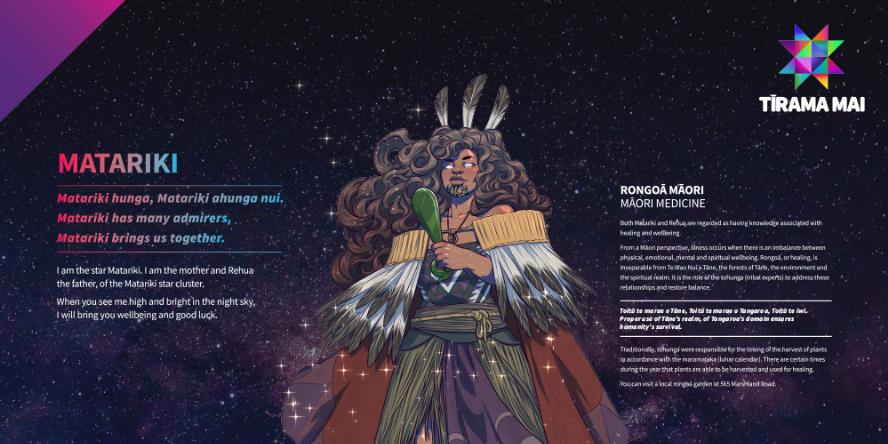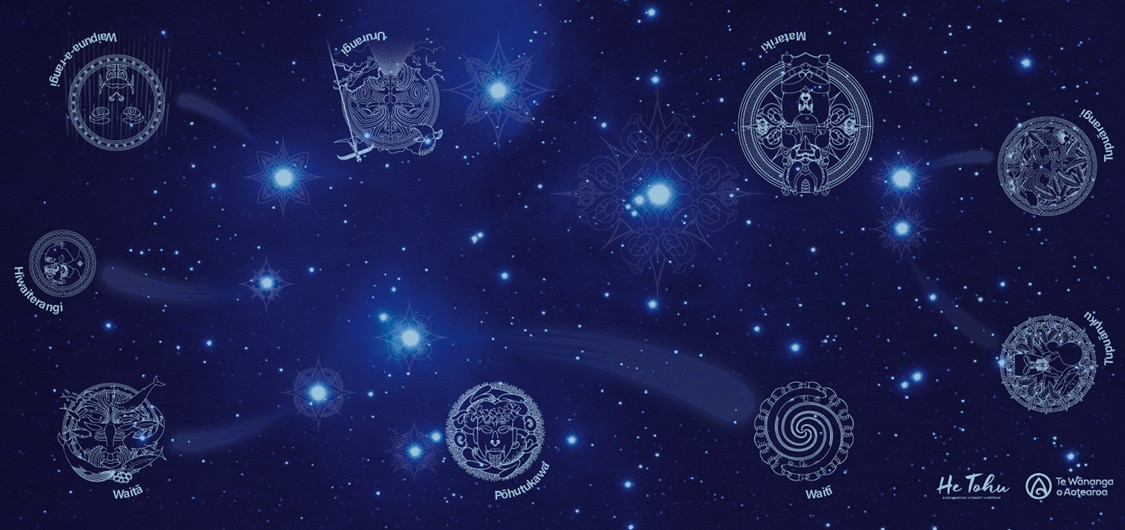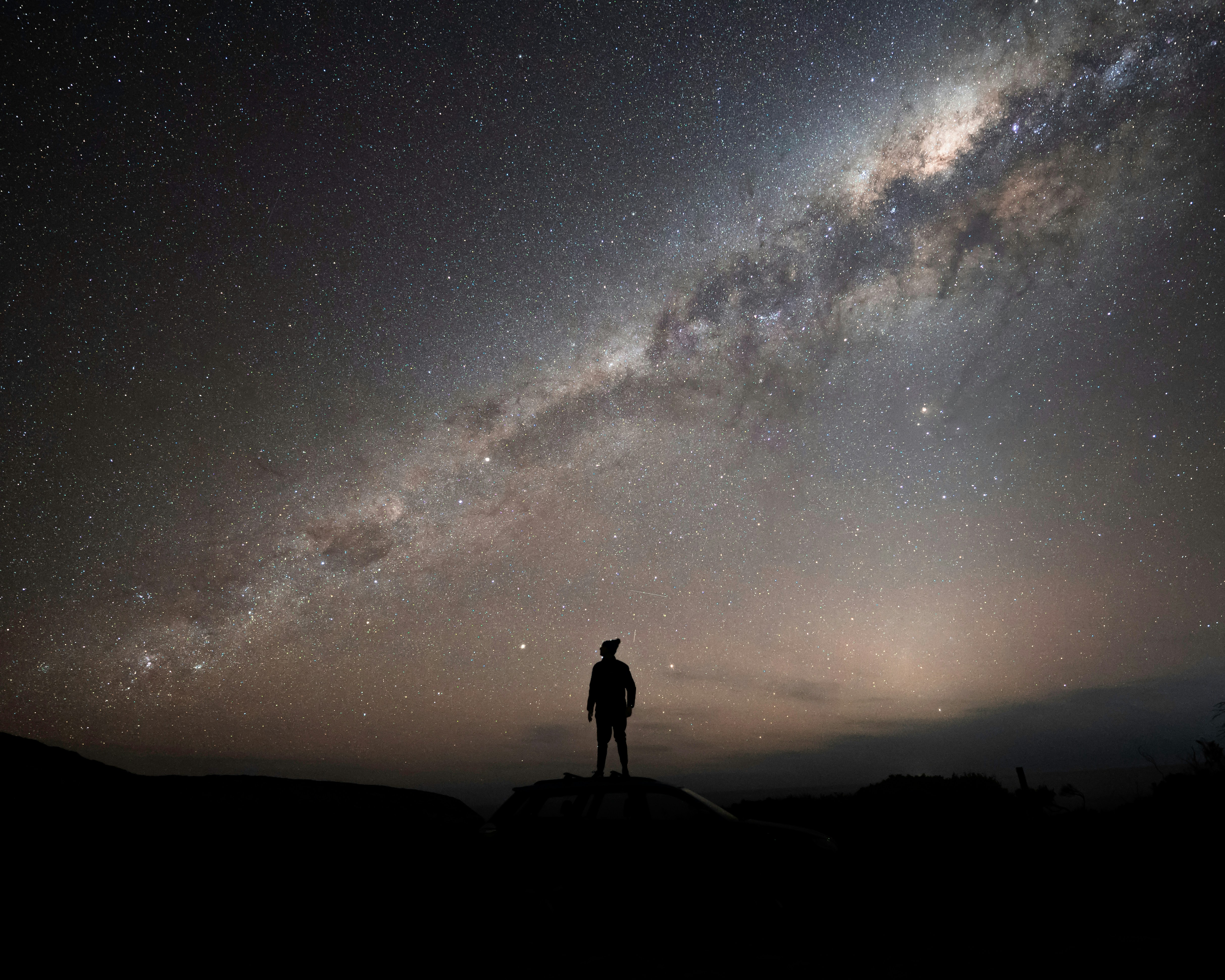So, what makes Matariki so special? Here’s a glimpse:
- It’s a time to remember loved ones who have passed away.
- It’s an opportunity to celebrate new beginnings and plan for the year ahead.
- It’s a moment to connect with nature and appreciate the cycles of the earth.
Matariki brings us all together. It’s a celebration of life, growth, and hope.
Lets explore what Matariki Celebrations are, why they are significant, and how stars have been used throughout history by various cultures worldwide.
The Glittering Matariki: An Introduction
Matariki is a special time in New Zealand, marking the celebration of the Maori New Year. This celebration isn’t just about fireworks or parties; it’s about community, reflection, and honouring the cycles of nature. Matariki takes its name from a cluster of stars also known as the Pleiades, and it appears in the sky around late May or early June. The rising of these bright stars signals a new beginning and a time to gather with whānau (family) and friends.
Historically, Matariki was a crucial part of life for the Maori people. When the stars of Matariki were spotted twinkling on the northeastern horizon just before dawn, it indicated that it was time to celebrate the abundance of the past year’s harvest and prepare for the future. Singing, dancing, and storytelling took centre stage as everyone came together to share memories, hopes, and plans.
Now, Matariki celebrations are seeing a grand revival. In 2022, New Zealand made Matariki a public holiday, cementing its importance in the cultural calendar. You’ll find communities across the country coming together for feasts, traditional music, and art, all under the stunning backdrop of the glittering Matariki stars. It’s a time to reflect on what has been, cherish our connections, and look forward to new opportunities.

The Legends of Matariki: Stories from Ancient Times
The stories of Matariki are as diverse and enchanting as the stars themselves. In Maori folklore, one of the most cherished tales describes Matariki as a mother, with her six daughters. They travel across the sky to visit their tupuna (ancestors), to share their wisdom and to nurture the earth. Each star has her own unique influence, from helping crops grow to guiding lost travellers home. This celestial family reminds us of the importance of unity, heritage, and gratitude.
But Matariki’s tales are not confined to New Zealand. In Japan, this star cluster is known as Subaru – yes, just like the car brand! The Japanese story speaks of the sisters who were transformed into stars by the gods to protect them from danger. Similarly, in ancient Greece, they are called the Pleiades, named after seven sisters who were transformed into stars to escape the pursuit of Orion, the hunter.
In Australia, the Aboriginal story varies between different communities. One telling involves seven sisters who walk the land, pursued by a man named Wurunna. To this day, these stories play a crucial role in teaching lessons about nature, respect, and survival.
Matariki is also significant in Chinese mythology, where it is referred to as Mao, one of the 28 lunar mansions. These narratives underscore the universal curiosity and reverence humans have towards the stars—a common thread that ties different cultures together across time and space.

The Star System of Matariki: A Cosmic Family
Imagine looking up at the night sky and seeing a little group of stars shining brightly together, much like a family gathered around a warm, glowing fire. This cosmic family is known as Matariki, a cluster of stars that have been cherished by the Māori people of New Zealand for generations. Each star in this cluster has a name and a role, weaving a beautiful story that connects the heavens to the Earth.
The name “Matariki” itself refers to the mother star, Alcyone, who is also known as the “gatherer” or “kai whakahaere.” She encourages us to remember and reflect on the past. Matariki is accompanied by her eight children: Tupu-ā-nuku, Tupu-ā-rangi, Waipuna-ā-rangi, Waitī, Waitā, Ururangi, Pōhutukawa, and Hiwa-i-te-rangi. Each star is not just a celestial body but carries its own story and meaning, deeply rooted in the Māori culture and beliefs.
For example, Tupu-ā-nuku is connected with food grown in the ground, highlighting the importance of agriculture. On the other hand, Ururangi is associated with the winds, indicating the close relationship between nature and the stars. Waipuna-ā-rangi represents the rain, which is essential for life on Earth. Each star in Matariki contributes to a greater understanding of the natural world and our place within it.
Stars as Timekeepers: Marking Seasons through the Skies
Imagine looking up to the sky and knowing exactly what season is coming next just by observing the stars! That’s what ancient cultures, including the Māori, were able to do. They used the stars as celestial calendars. One of the most important star clusters for the Māori is Matariki. Its appearance in the dawn sky signalled the start of the Māori New Year.
But how did they know? Astronomy experts, known as tohunga kōkōrangi, would scrutinise the visibility, structure, and even colour of each star within the Matariki cluster. This careful observation enabled them to make intricate predictions about the coming year’s weather, crops, and overall prosperity for their iwi, or tribe.
Stars and Agriculture: Planting by the Phases of the Sky
Throughout history, the stars have played a significant role in agriculture, guiding farmers in their planting and harvesting schedules. For Māori, the rising and setting of certain stars, particularly the Matariki star cluster, are crucial signals. When Matariki disappears in April or May, it indicates it is time to harvest and preserve crops, ensuring food supply for the colder months ahead.
The reappearance of Matariki in the dawn sky around late June or early July marks the Māori New Year and signals the optimal time for planting new crops. This period is celebrated with festive activities where communities come together to honour the past year’s harvest and prepare the soil for the new planting season.
Each star in the Matariki cluster is connected to aspects of the environment and well-being. For example, Tupuānuku is associated with food grown in the soil, and Tupuārangi is connected to food from the sky, such as birds. By observing these stars, experts known as tohunga kokorangi can make predictions about the weather and the abundance of various food sources for the upcoming year.

Navigating by Starlight: How Ancient Explorers Found Their Way
Imagine you’re out in the vast, open ocean with no land in sight. How would you know which way to go? For ancient navigators, the answer lay in the night sky. Expert Māori navigators on voyaging waka (canoes) would use the Matariki star cluster as a celestial compass, guiding their journeys across the Pacific. The stars were like an ancient GPS system, intricately woven into the fabric of daily life and survival.
Māori navigators were highly skilled in reading the stars. They knew how to interpret the night sky, recognising subtle changes and patterns. These celestial experts, known as tohunga kōkōrangi, could predict the weather and locate their position just by observing the heavens. They used Matariki and other star clusters to set their course, ensuring they reached their destination safely.
But it wasn’t just the Māori who navigated by starlight. In ancient Greece, sailors also looked to the stars to find their way. The Pleiades, known as Matariki in New Zealand, signalled the start of the sailing season in the Mediterranean. The name “Pleiades” is thought to have come from the Greek word plein, meaning “to sail”. For these ancient explorers, the stars were essential tools for navigation across their known world.
Stars have been indispensable not only for navigation but also for marking time and seasons. Throughout history, different cultures have developed unique systems to read the stars, guiding everything from voyages to farming cycles. In this way, the night sky has served as a map, a calendar, and a guide for countless generations.

Star Hop: Easy Steps to Find Matariki in the Sky
Spotting Matariki in the night sky can be an exciting adventure! Here’s how you can do it during mid-winter, which is the best time. First, look for a group of stars called Tautoru, which is also known as Orion’s Belt. These three bright stars are quite noticeable.
Next, you need to find Te Kokot, often referred to as ‘The Pot’ or ‘The Saucepan’. Imagine Orion’s Belt as the base, with the Pot’s handle extending out to the left. Once you have “The Pot” in view, follow its handle three stars to the left.
Now, keep your eyes peeled for a small and densely packed cluster of stars – that’s Matariki! It might be a bit tricky to spot at first because it’s not as spread out as some other star groups, but with patience, you’ll get there.
Here’s a tip: look to the north-eastern sky just before dawn, between 5:30 am and 6:30 am, when Matariki is easiest to see. The earlier you head out, the better your chances of catching a clear view before the morning light starts to brighten the sky.

Myths and Facts: Debunking Common Starry Misconceptions
When it comes to stars and constellations, myths and misconceptions abound. Matariki is no exception, with its own set of misunderstandings.
Myth 1: Matariki is a Single Star
Some people mistakenly believe that Matariki is just one star. However, Matariki is a star cluster. In New Zealand, we typically refer to nine stars, although with a telescope, you can see even more.
Fact: A Star System with Unique Personalities
Each of the nine stars in the Matariki cluster has its own name and personality. For example, Tupuānuku is associated with food grown in the ground, while Waipuna-ā-Rangi is connected to the rain.
Myth 2: Matariki Celebrations Are a Modern Invention
Some think that the celebration of Matariki is a recent trend. In reality, Matariki has been celebrated for centuries by the Māori. The practice might have waned over time but has recently been revitalised.
Fact: An Ancient Tradition Revived
The revival of Matariki festivities has provided a deeper understanding and appreciation of Māori culture. Resources such as ‘The Astronomical Knowledge of the Māori’ by Elsdon Best highlight how integral this knowledge was to Māori life.
Myth 3: Matariki is Unique to New Zealand
While Matariki holds special significance in New Zealand, it is not unique to this country. This star cluster is known worldwide by different names.
Fact: A Global Phenomenon
Matariki is recognised as the Pleiades in Greek mythology, Subaru in Japan, Mao in China, and Krittika in India. While the names and myths differ, the stars are the same and hold cultural importance worldwide.
Myth 4: Stars Are Only for Stargazing
Another common misconception is that stars are just beautiful things to look at in the sky.
Fact: Practical Uses of Stars
Throughout history, stars have been crucial for timekeeping, agriculture, and navigation. For example, ancient explorers used stars to find their way across oceans, and many cultures planted crops according to the stars’ positions in the sky.
By understanding these myths and facts, we gain a richer appreciation for Matariki and the broader realm of astronomy. The stars are not just lights in the sky but storytellers, guides, and keepers of time. Exploring them can connect us to both our history and our future.


